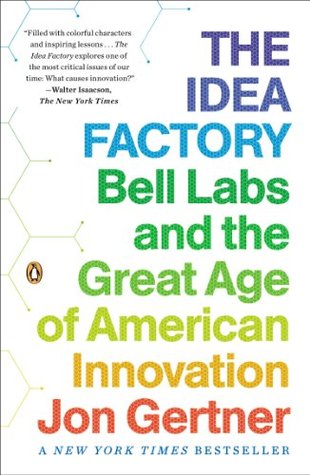More on this book
Community
Kindle Notes & Highlights
Kim, however, didn’t want Bell Labs to be a citadel of science and scholarship. He wanted it to be a hotbed of entrepreneurial thinking.
But at that point these changes were almost certainly necessary.
In 2006, Bell Labs’ other main campus—the Black Box at Holmdel, Eero Saarinen’s architectural tribute to Bell Labs’ innovative capabilities—was shut down.
Alcatel-Lucent put the 1.9-million-square-foot building up for sale.
The building’s almost two million square feet of space were designed for workers of a bygone age who were pursuing a mission of universal connectivity that now seems largely completed.
There are many physical reminders—the wooden phone poles and wires, for starters, that support our current phone and data networks and were made almost absurdly durable thanks to years of research at Bell Labs.
in most American towns, those sturdy, windowless buildings, also still stand, though switching has become so efficient and miniaturized through the use of integrated circuits that the buildings are mostly empty, and chronically dark.
As the engineering writer Brian Hayes points out, “a machine the size of a pizza box can handle a town’s telephone system.”
In the event of a problem, a computer switch can alert someone at network headquarters to come take a look in person.
Its interior was cut up and converted to apartments.
The computer labs stay busy. The same can’t be said for the physical science and electronics laboratories.
According to the U.S. Space Objects Registry, as of late 2010, Telstar—the first active satellite—is no longer functional. Yet it still orbits the earth. An exquisite machine requiring a year of nonstop work by hundreds of engineers, it is now a rotating piece of space junk.
Many of the ideas and innovations that came out of the Labs have been subsumed into a global electronic network far larger and more wondrous than existed when Shannon and Pierce agreed, in the late 1940s, that the Bell System was the most complex machine ever created.
To use the most obvious example, the transistor, countless engineers around the world have taken the original idea and made it better and better, as well as smaller and smaller.
Lasers and optical fibers and CCD chips—the charge-coupled devices, invented at Bell Labs, that allow for digital photography—have followed a similarly astounding trajectory.
“The commercially available rates are eight terabits per second per fiber,” explains Herwig Kogelnik, the laser scientist who began his career under Rudi Kompfner in 1960.
A fiber strand can therefore carry millions of voice channels or thousands of digital TV channels.
The transistors, lasers, quality assurance methods, and information technologies have been incorporated into computers, communications, medical surgery tools, factory productivity methods, digital photography, defense weaponry, and a list of industries and devices and processes almost too long to name. Scores of Bell Labs veterans have meanwhile taken jobs in technology companies such as Google and Microsoft; even more have gone into academia, following Shannon’s and Shockley’s example, and passed along their ideas to the next generation.
The National Security Agency—Bill Baker’s old stomping ground, which continues to monitor the transmission of information around the globe—recently revealed that every day it intercepts and stores two billion phone calls, email messages, and other data transmissions.
Therein also lies evidence of how the rapid, easy, and cheap exchange of information exposes individuals to intrusions of privacy while also exposing societies to vulnerabilities that could be exploited by hackers and cyberterrorists.
Some technology journalists, notably the writer Nicholas Carr, have asked recently whether an increasing reliance on instant communications and Internet data is eroding our need, or ability, to think deeply.
“My mind now expects to take in information the way the Net distributes it: in a swiftly moving stream of particles.”
THE PURPOSE OF INNOVATION is sometimes defined as new technology. But the point of innovation isn’t really technology itself. The point of innovation is what new technology can do. “Better, or cheaper, or both”—Kelly’s rule—is one way to think about this goal.
Put another way, a new technology can put more money in our pockets, and it can allow us to do things—call across the country, send email, write software, design skyscrapers, model pharmaceuticals—in ways that were never possible before. The results can be manifested in new products and civilizing comfort, as well as by economic growth. “The history of modernization is in essence a history of scientific and technological progress,” Wen Jiabao, the premier of China, said recently. “Scientific discovery and technological inventions have brought about new civilizations, modern industries, and the
...more


